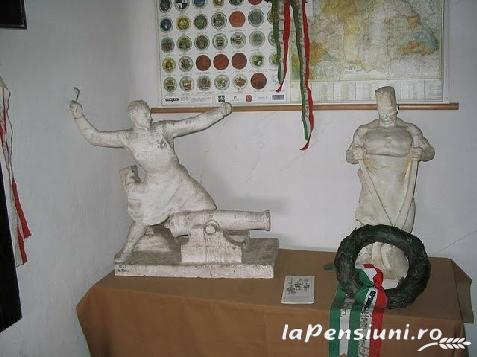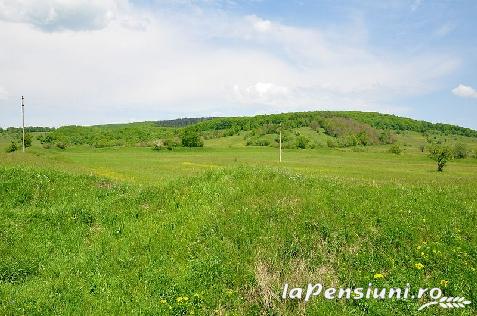

Memorial House Gabor Aron - Aron Gabor was an officer? Er artillery of the Second Regiment of Infantry Székely, joined the Hungarian Revolution, hero of the Hungarian Revolution of 1848.
Gábor became one of the leaders of the Hungarian revolutionary forces in Transylvania in 1848 against the Austrian Empire. He gained fame and notoriety producing cannons and gunpowder for the Revolutionary Hungarian forces in Transylvania County and Three Chairs driving resistance (which today corresponds roughly Covasna) against imperial troops. He fell on the battlefield in July 1849 fighting against Tsarist forces, called the Austrian Empire to intervene against the revolution.
Excavations made over time in the village showed human exitenta here since ancient times, as in step Oituz was found a bronze spearhead and the riverbed Bretcu a stone ax belonging Cotofeni culture.
On a terrace oak hill northwest of the village, at a place called "Castle" is gasedte Roman camp August (noted in some documents with names angusta), built in 102, the earth with palisades, then rebuilt in stone, with doors on four sides flanked by rectangular towers and round towers of combat corners. Inside the fort were found fragments of genuine Dacian pottery, shaped by hand or wheel work on a imitation currency? Ie after a Dacian silver drachma of Alexander, a Republican and a denarius imperial denarius of Vespasian and Trajan. In the village have also found a bronze Celtic, a spearhead and an ax stone hammers in the form of bronze, all belonging to the Bronze Age. Near the village are the remains of a settlement signals and Monteoru type.
(Translated with Google Translate)
Services
- Vegetarian Menus
- Local cuisine
- Sauna / turkish bath
- Artistic and historical sites
- Churches and monasteries
- Hunting
- Fishing
- Horse riding

